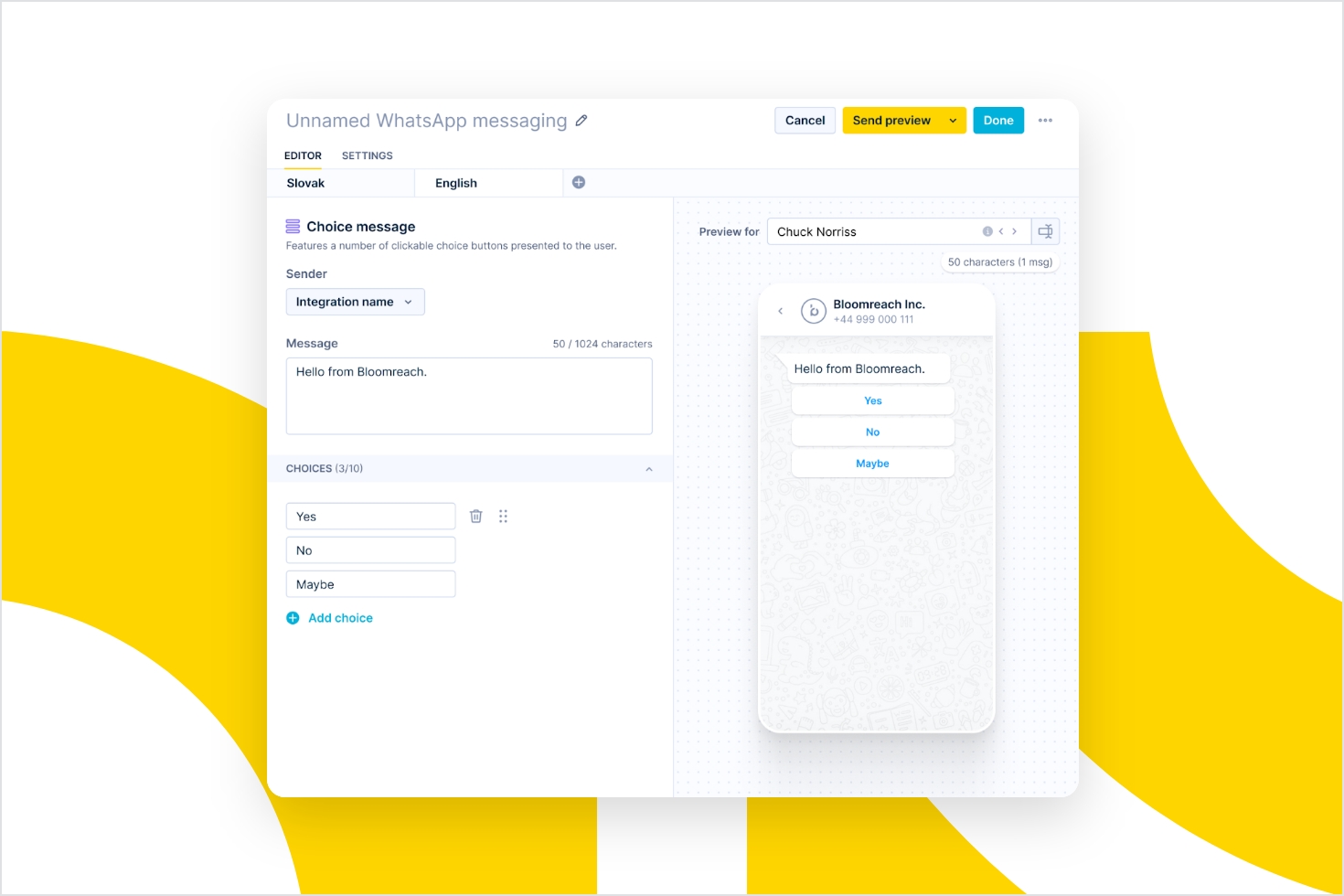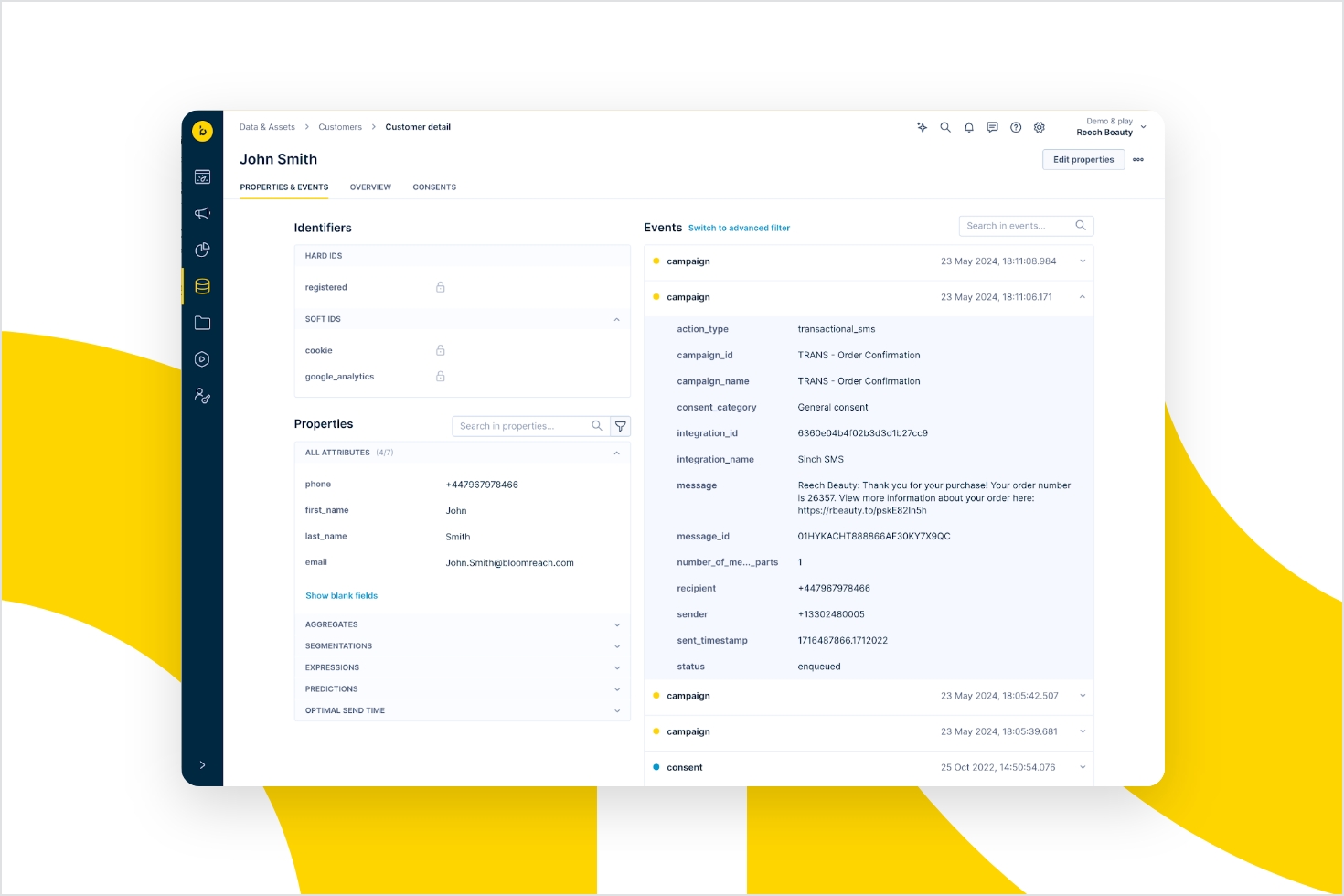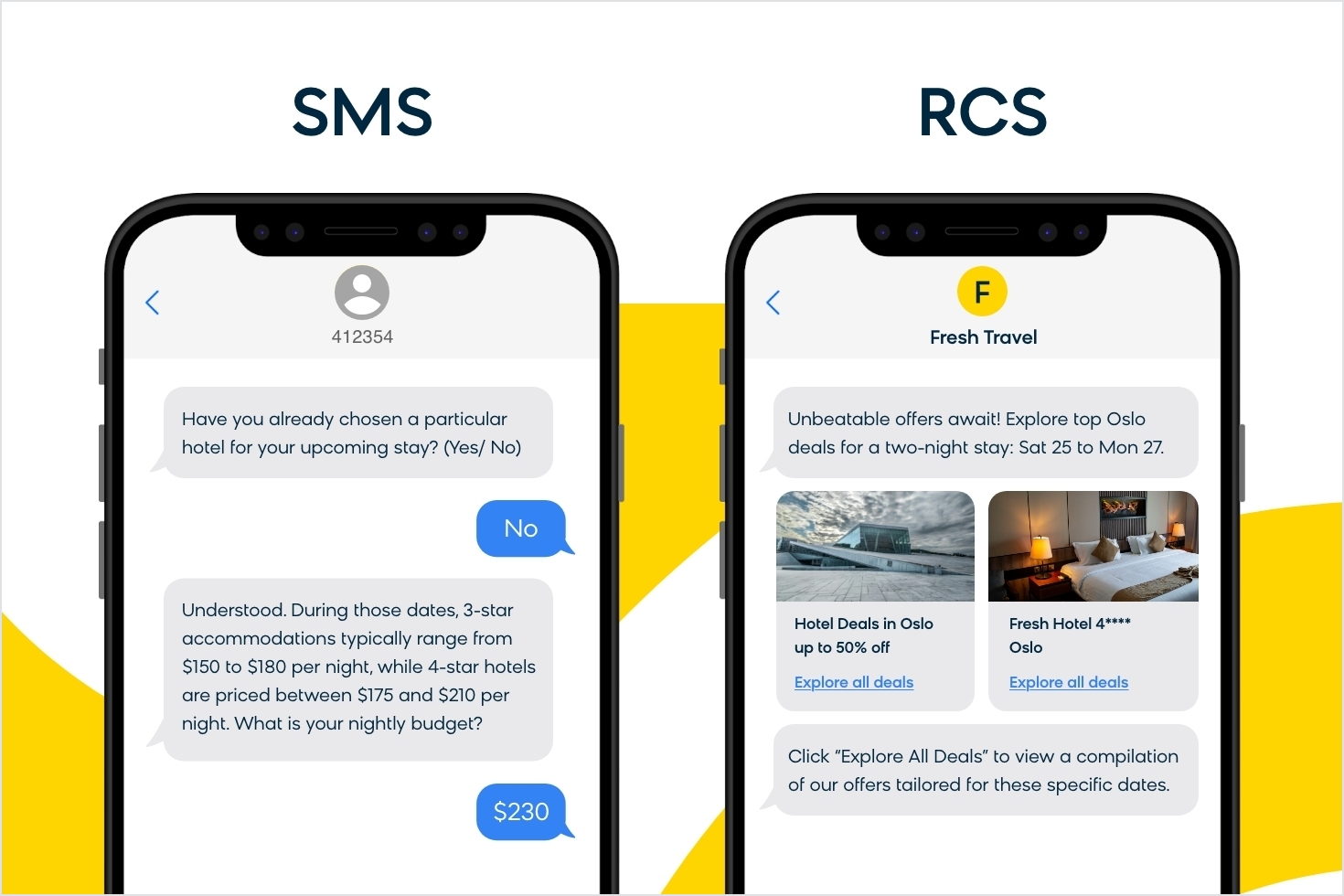Unlock the Power of Mobile With Bloomreach’s New Features
By Jonathan Senin
06/06/2024

In the past five years, SMS marketing has exploded in popularity. Both brands and consumers have adopted the channel and marketing practice: 91% of consumers globally have already signed up for an SMS program or are interested in doing so. Brands are more than happy to engage customers on this channel, with SMS volumes increasing every year. WhatsApp is analogous: increasing consumer-to-brand interactions every year.
Yet, the format and approach for mobile message marketing have remained somewhat stagnant. On the format side, much of mobile messaging is text-based, with “one-way” copy that’s oriented toward announcements, like a sale or a price drop. The typical call to action is to simply visit the website.
On the approach side, marketers adopt a similar mindset with mobile messaging as email. At best, they’ll segment and target some campaigns using real-time data. But more often, marketers take a batch-and-blast approach, with little targeting or personalization.
Combined, all these means:
- Mobile message marketing can easily be ROI-negative (relative to email costs)
- Consumers aren’t as engaged on mobile as they could be
- Mobile messaging does little to move consumers down the actual purchase funnel and often drives top-of-funnel behavior
While open rates and CTR for both SMS and WhatsApp remain high (or at least, higher than email), as the mobile inbox becomes increasingly crowded, that won’t last forever.
Thankfully, new technological changes and integrations are coming to key mobile messaging channels like WhatsApp, Apple, Android, and more. In this post, we’ll dive into the various updates and features in Bloomreach that will help marketers take advantage of mobile channels.
The Newest Product Updates
Bloomreach Engagement is incorporating these new technological changes into our marketing automation platform, making it easier for marketers to:
- Collect meaningful first-party data, like product preferences, natively in mobile for deep targeting and personalization
- Drive mid and bottom-of-funnel conversions, like add-to-carts and purchases
- Orchestrate and monitor all mobile messaging in a single view, reducing TCO
Today, we’re happy to announce three new product updates for mobile messaging:
- A native WhatsApp integration, which brings new message types and formats
- Transactional SMS support via API
- Planned product roadmap support for Rich Communication Services (RCS), the SMS successor
With these updates, marketers can:
- Create multi-stage interactive experiences within mobile via buttons
- Automate two-way conversations based on text responses
- Create granular reports analyzing both marketing and transactional SMS
- Showcase products via high-resolution media and video
Bloomreach Engagement is the leader in the omnichannel marketing automation platform space that has native support for SMS, MMS, WhatsApp, and soon, RCS. This means marketers can engage customers and drive conversions, regardless of their preferred channels.
WhatsApp Integration
Our new WhatsApp integration brings higher performance and more message types. The integration is fully native, which means a smoother setup process within Engagement, a new dedicated node within scenarios, event tracking, real-time triggers, and maximum file size support.
Here are the new message types our WhatsApp integration supports:
- A high character count limit of 4,096.
- Media messages, including high-resolution videos, images, and GIFs.
- A WhatsApp-specific marketing message that can be triggered in real-time upon any customer event (note that this requires approval from Meta/Facebook).
- “Floating” buttons called quick replies at the bottom of messages that allow users to easily reply to a brand’s message with a set response. This can include both text and links, with a possibility of three buttons per message.
- A menu of interactive buttons that users can toggle open or closed. Brands can include up to 10 possible buttons/options. These buttons themselves can include a variety of formats, like links, simple text, phone numbers, and quick replies.
What Changed?
This update is a technical and platform improvement from our previous WhatsApp integration, which did not support the message types nor provide an interface to create them.
On the insights front, it was difficult to create WhatsApp-specific dashboards and reports, requiring technical expertise to do so.
Benefits of the Integration
With our fully native WhatsApp integration, you can easily collect first-party data from buttons and responses to use for further segmentation and personalization. In turn, this will help you increase down-funnel conversions like add-to-cart rates and purchases with dynamic product showcases. Rich multimedia means marketers and merchandisers can show off products with engaging pictures and video, enabling customers to explore products without leaving the app.
With quick replies, you can automate two-way conversations with customers and leverage personalized recommendations based on their replies. It’s also easier to build flows within scenarios via our dedicated mobile message node.
Finally, you now get comprehensive WhatsApp campaign analytics to more effectively track and optimize your campaigns in real time. Teams can build WhatsApp reports, funnels, cohort analyses, and any other out-of-the-box Engagement analysis.
Learn more about our WhatsApp integration in our documentation.

It’s easy to add quick reply buttons to each WhatsApp message, giving customers multiple options to interact with your brand and collect first-party data.
Transactional SMS
We’ve improved the way we handle transactional SMS support by connecting it via API. With this update, teams can send transactional SMS (transSMS) via Bloomreach Engagement, triggered anywhere that can make an API call (like AfterShip, Shopify, or data warehouses).
What Changed?
Transactional SMS was previously sent through scenarios, but this didn’t always meet all of our clients’ expectations. Teams had to manually import events to execute transactional SMS campaigns, which added significant overhead. Because of the need to import, messages couldn’t be sent in real time, like after a purchase or when a product was shipped.
Additionally, imported events were typically used for a single purpose, making this approach inefficient and not scalable for long-term solutions.
Benefits of the Update
Transactional messages now have immediate and direct SMS dispatch. They are triggered in real time, leading to enhanced responsiveness and scalability. A dedicated API for transactional SMS also means real-time communication, which is critical for notification updates like shipping statuses or appointment reminders.
Moreover, you can track every transactional SMS you send in a single customer view. See an example of a fake customer profile below. This makes it easy to orchestrate all your SMS marketing from a single platform, ensuring you have the right rules in place for communication frequency. You can also create granular reports for transSMS sends and trends.
Other Feature Notes
There is no interface to “change” or monitor the transactional SMS — it’ll all have to be managed via the API. Additionally, the triggering of the API and the sending of the SMS will create events, which will be logged as usual under the customer profile. Learn more about the transactional SMS update in our documentation.

Each transactional SMS is logged on the customer profile as an event, with key information like the message text, order number, and more.
Rich Communication Services (RCS)
We have confirmed roadmap support for Rich Communication Services (RCS), the next successor after SMS and MMS. RCS is the new mobile messaging protocol that brings with it a range of new formats, native to Apple and Android, like carousels, buttons, rich media, and more.
Benefits
RCS will make it easier to showcase products via media like images and video, which will help drive mid- to bottom-funnel conversions (e.g., add-to-favorites, add-to-cart rate, etc.). Furthermore, this is native on both Apple and Android, so there’s no need for users to download a mobile app to enjoy a better messaging experience.
By using RCS, you can create a more branded experience and format, as well as get better reporting on metrics like clicks, views, products viewed, and more.
Read our RCS blog post to learn more.

Stay on Top of the Latest Mobile Innovations From Bloomreach
At Bloomreach, we’re constantly finding new ways to help marketers create more personalized and effective campaigns. We’ll be adding more feature releases and updates to this blog post as they get released, so follow along here or check out our product roadmap.
Found this useful? Subscribe to our newsletter or share it.





